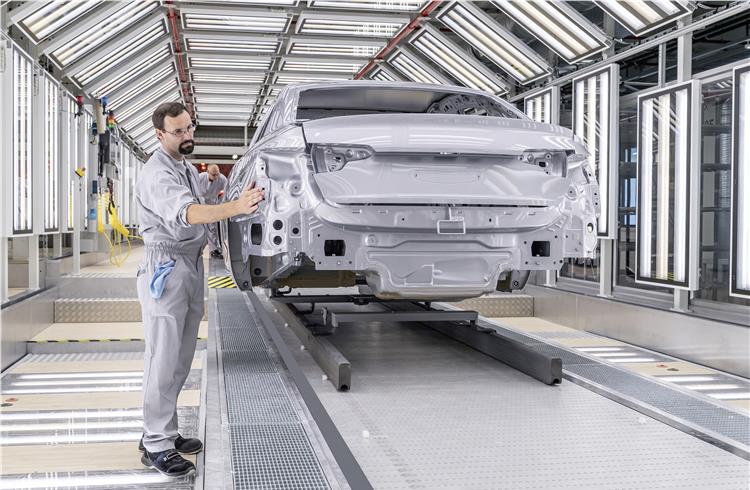
How to Fix Paint Chips on Car: A Step-by-Step Guide
Share
Driving your shiny car always brings a sense of pride. However, those unsightly paint chips can ruin the visual appeal and overall aesthetic of your vehicle. If youre a car enthusiast or a tech professional who loves to keep your vehicle in top shape, understanding how to fix paint chips on a car is vital. In this detailed guide, well walk you through the entire process of addressing paint chips effectively, ensuring your car looks brand new again.
Paint chips can occur due to various reasonsroad debris, accidental scratching, or even weather wear. Regardless of the cause, the stakes are high. Not only can these chips expose your car to rust, but they can also decrease its resale value. Whether you're a tech aficionado who enjoys DIY projects or a professional with an eye for detail, knowing how to tackle these paint chips is an essential skill that can save you money and keep your ride looking immaculate.

Understanding the Types of Car Paint
Before we dive into the practical steps of fixing paint chips, lets first understand the different types of automotive paint. Most vehicles today come with either single-stage or two-stage paint systems. For a thorough overview, you might find the information on automotive paint quite helpful.
Single-Stage Paint vs. Two-Stage Paint
Single-stage paint integrates the color and clear coat into a single layer, meaning it can be easier to repair small chips. Two-stage paint consists of a base layer for color and a separate clear coat layer. If you have two-stage paint, fixing chips will require more care to blend the layers seamlessly.
Tools You'll Need
To fix paint chips, youll need a few essential tools:
- Touch-up paint: Make sure to select the correct color code for your car.
- Sandpaper: Choose fine-grit sandpaper (2000-grit works well) for feathering the repair area.
- Clear coat: This will protect your repair and provide a glossy finish.
- Rubbing compound: Useful for polishing and blending.
- Microfiber cloth: For cleaning and buffing.
Step-by-Step Guide to Fixing Paint Chips
Step 1: Clean the Affected Area
Begin by cleaning the chipped area with soap and water. Make sure all dirt, grease, and debris are removed. Dry the area thoroughly using a soft cloth to prevent any contaminants from interfering with the repair.
Step 2: Sand the Chip
Using fine-grit sandpaper, gently sand the area around the chip. Be careful not to sand too deep; just enough to smooth the edges of the chip for better paint adhesion.
Step 3: Apply Touch-Up Paint
Using a small brush or the applicator provided with your touch-up paint, carefully apply the paint to the chip. Make sure to apply thin layers, allowing each coat to dry completely before adding another. Multiple coats may be necessary, so patience is key.
Step 4: Add Clear Coat
Once the touch-up paint is dry, apply a clear coat over the area. This step is crucial to protect your paint and provide a smooth finish. Follow the manufacturer's instructions for the best results.
Step 5: Polish the Area
After the clear coat has cured, use a rubbing compound to buff the area. This will help blend the repair with the surrounding paint, making the fix less noticeable.
When to Seek Professional Help
While fixing paint chips can be an accessible DIY project, some situations warrant professional attention. If the damage is extensive or if your car has complex paint layers, consider seeking help from a professional detailer or body shop. You can learn more about how to paint a car for future reference.
Maintaining Your Cars Paint Job
Preventative measures are essential for maintaining your vehicle's appearance. Regularly wash your car, apply wax, and consider using a paint protection film to shield the paint from chips and scratches. You can find interesting insights on car maintenance tips that can help enhance your journey.

FAQs
What causes paint chips on cars?
Paint chips can be caused by various factors, including road debris, collision, weather exposure, or improper washing techniques.
Can I fix paint chips myself?
Yes! Many paint chips can be repaired easily at home using the right tools and techniques.
How long does touch-up paint take to dry?
Drying time can vary based on the paint type used, but typically it takes a few hours for touch-up paint to dry completely and up to 24 hours for full curing.
In conclusion, knowing how to fix paint chips on a car not only enhances your car's appearance but also prolongs its lifespan. With the right tools and techniques, youll be able to tackle paint chips confidently. After all, as a tech professional, you appreciate precision and the satisfaction of a job well done!
